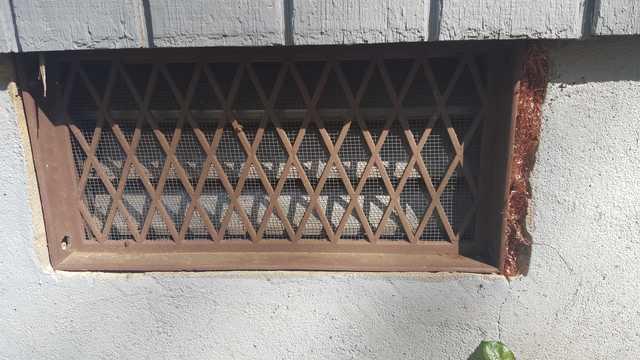Easy Access for Rodents in Atlantic Highlands, NJ
Challenge
Recently, I was sent to a home in Atlantic Highlands, NJ to deal with a mouse invasion. From my personal experience, mouse infestations have been exceptionally higher in years past. I attribute part of this to the brutal weather. Mice, like many insects and other rodents, are overwintering animals. They seek out shelter to escape the harsh outdoor elements. And this year are brutal winter had mice coming into homes in droves. According to these homeowners, they had been living in this home for years, and this was the first time that they had ever seen a mouse scurrying about inside their home. Needless to say, they were pretty frantic about the situation, and were grateful when I arrived.
Mice are tiny rodents, even much smaller than they appear because of all their fur. A typical house mouse weights only about 3/4 of an ounce, and no more than 4” long, excluding their tail. These slender animals require only the smallest of holes, gaps, or cracks to enter a home. The general rule is that if they can poke their snout inside a hole, the rest of the body will follow. Although mice have been known to climb up gutters, for the most part, mice enter homes through the basement or crawl space foundation. Once inside, they use wall voids to travel unnoticed throughout the home. Often, a mouse infestation goes unnoticed until they enter the living areas of the home and leave traces of activity such as droppings or chewed food packaging. In kitchens, mice tend to gravitate to warm, secluded areas such as behind stoves or nearby refrigerator compressors.
Solution
During my inspections, I always check the piping under the kitchen sink and the gas line behind the stove to determine how the mice are entering the kitchen. Gaps around pipes are common entry points to gain access inside a home as well as moving about once inside. Sometimes, the sealant has worn away and other times, the pipes were not adequately sealed in the first place. While we may not notice these gaps, for mice, they are an open invitation. For these exposed areas, we use a chew-proof copper mesh that blocks the rodents. I also do interior and exterior perimeter checks around the foundation to determine how the rodents are getting inside. For potential entry points, I’ll seal the openings with copper mesh and use baits wherever there is an indication of rodent activity.







